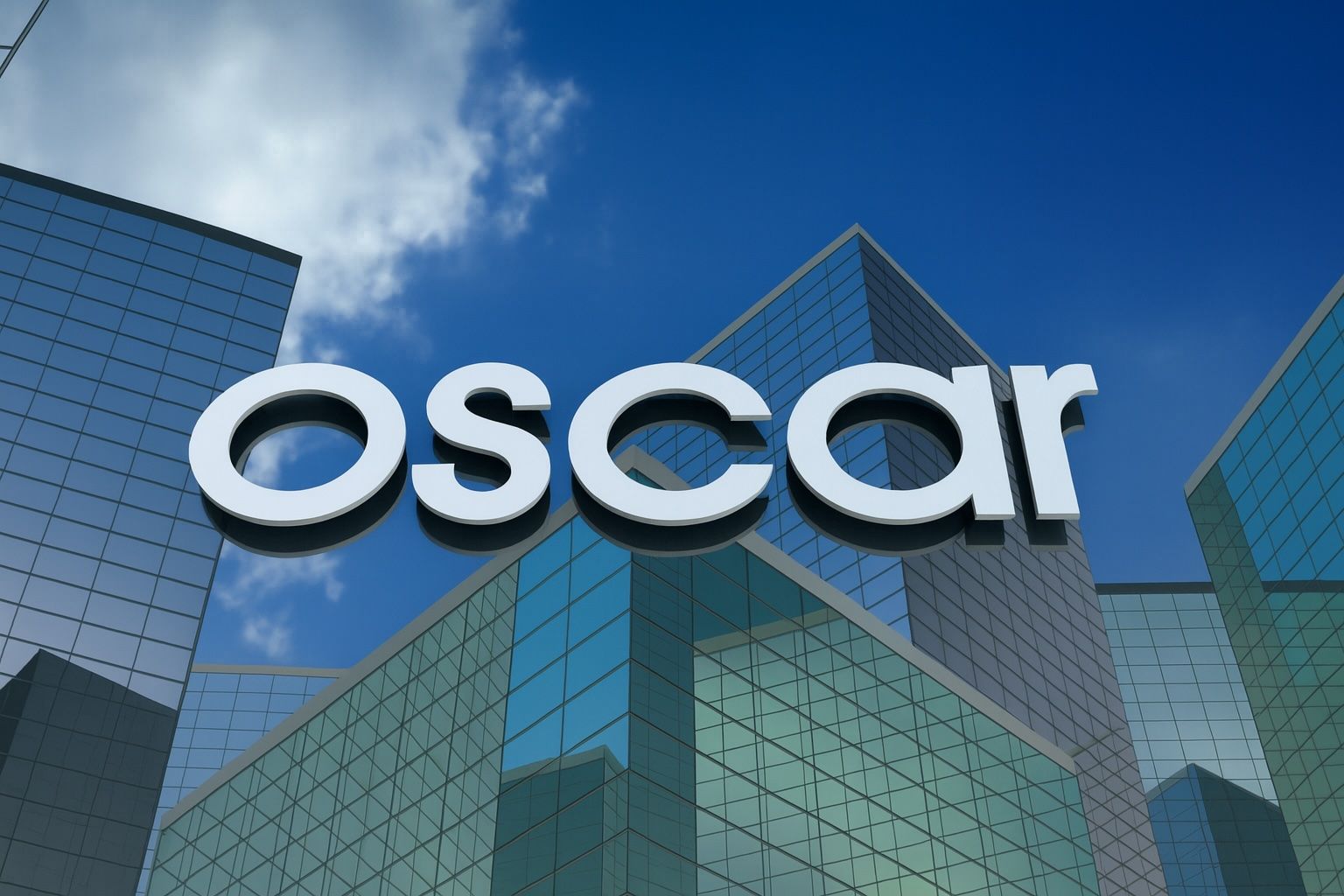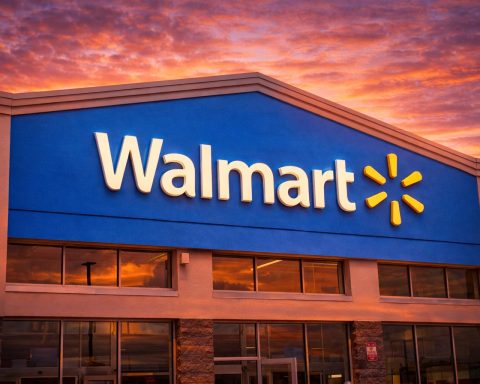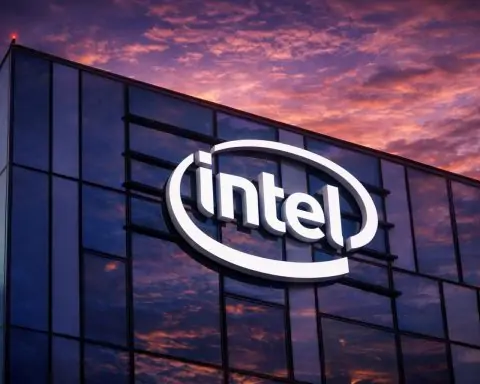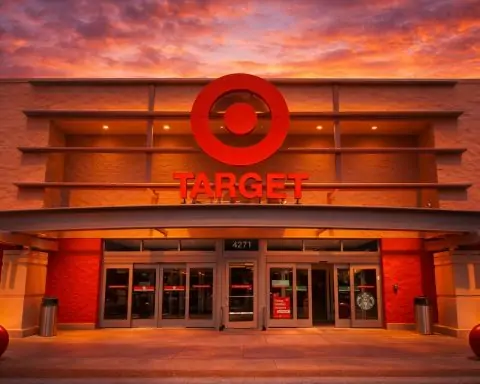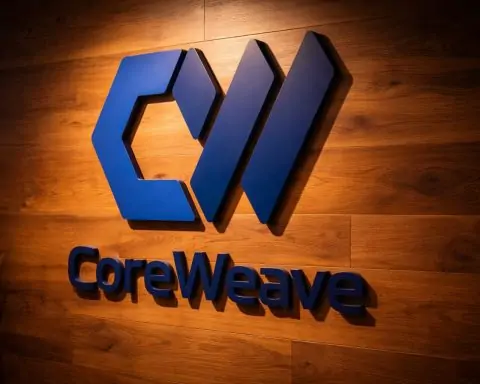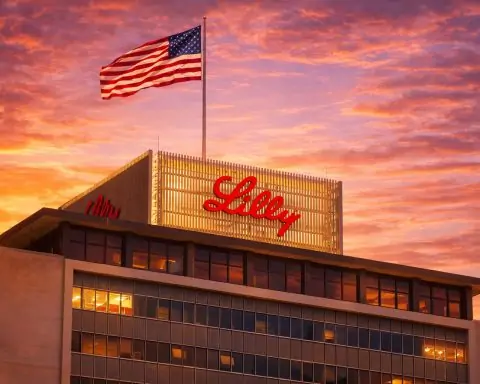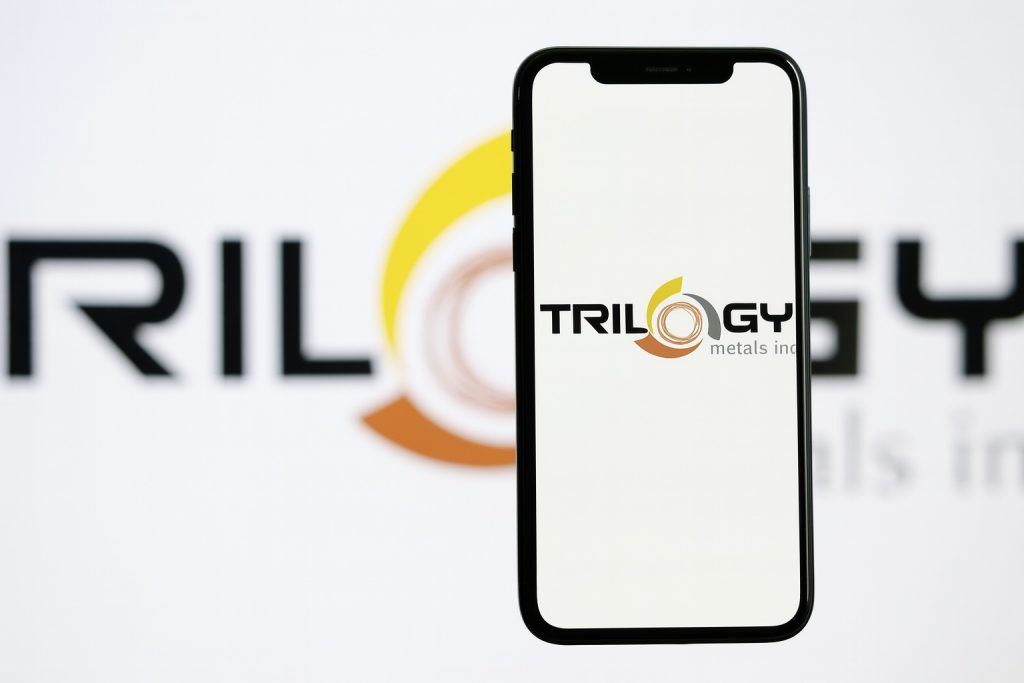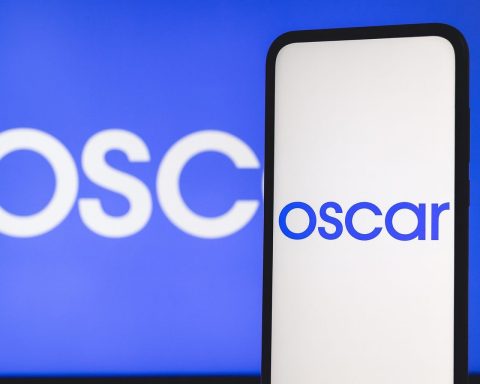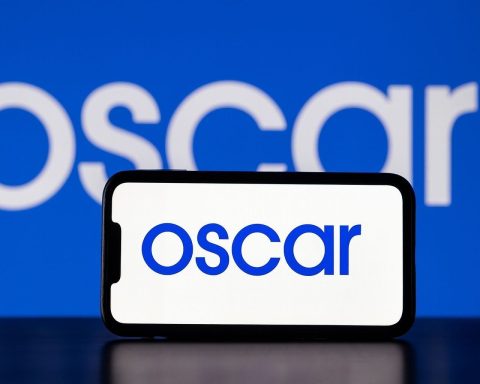- Stock Price & Market Cap (Oct 2025): ~ $22.3 per share (close of Oct 6, 2025) [1]. Market capitalization ≈ $5.6 billion [2]. The stock has climbed sharply in recent weeks – up about 8% over the past week, and roughly +42% year-to-date in 2025 [3]. For example, on Oct 3 the stock closed around $21.50 (about an 11% jump in one day) [4].
- Q2 2025 Earnings (reported Aug 6, 2025): Revenue ~$2.86 billion (up ~29% YoY) [5] [6]; net loss ~$228 million (EPS –$0.89) vs. a $56 million profit in Q2 2024 [7]. The medical loss ratio (MLR) spiked to 91.1% (vs. 79.0% year-ago) due to higher member acuity [8]. Oscar cited an increase in average market morbidity as the main driver of the deteriorated loss ratio [9]. Membership topped 2.0 million by June 30 (≈+28% YoY) [10].
- Updated Guidance: In late July 2025, Oscar raised its full-year 2025 revenue forecast to $12.0–$12.2 billion (from $11.2–$11.3 billion) [11] – above analysts’ consensus (~$11.3B). It projected a full-year MLR of ~86–87% and an operating loss in the $200–$300 million range [12] [13]. (For context, Oscar’s outlook depends heavily on ACA marketplace dynamics.) Management reiterated that they expect the individual market “to stabilize” next year and aim to return to profitability in 2026 [14] [15].
- Recent Developments: In mid-September 2025 Oscar priced $355 million of 2.25% convertible senior notes (due 2030) – upsizing the deal from $350M [16]. Proceeds will fund “general corporate purposes,” including AI initiatives and customer experience projects [17]. Oscar also announced a new Hy-Vee employer health plan (starting Jan 2026) tying its ACA platform to the grocery/clinic network, with CEO Bertolini quipping that healthcare coverage should be “as easy as buying milk at Hy-Vee” [18]. In July (pre-Q2 call) Oscar reaffirmed its 2025 guidance at industry conferences [19]. Finally, the stock has been buoyed by broader ACA news – e.g. a Reuters/KFF poll (Oct 3) showed ~78% of Americans favor extending ACA premium subsidies [20] – supporting Oscar’s core market.
- Analyst Sentiment & Price Targets: Wall Street is largely pessimistic. MarketBeat reports 0 Buy ratings on Oscar – 6 Sell and 4 Hold – yielding a “Strong Sell” consensus [21] [22]. The average 12-month target is only ~$12 (implying ~40–45% downside) [23]. Major brokers have cut Oscar: e.g. UBS (Sell, $11 PT), Wells Fargo (Underweight, $10 PT), Barclays (Underweight, $17 PT) [24]. (By contrast, a few analysts remain more positive on Oscar’s tech-driven growth, though none rate it a Buy.)
Financial Performance & Q2 2025 Results
Oscar Health’s Q2 2025 results showed rapidly growing revenue but steep losses. Revenue was $2.86 billion, up ~29% from $2.22 billion a year earlier [25]. This growth stemmed largely from higher membership – Oscar served over 2.0 million members by mid-2025 (28% growth YoY) [26]. However, costs ballooned: Oscar’s medical loss ratio (MLR) jumped to 91.1% in Q2 2025 (vs. 79.0% in Q2 2024) [27]. The company attributed this to an increase in average member morbidity and higher-than-expected risk in the ACA population. The operating result was a $230 million loss (vs. $67.8M operating income in Q2 2024), translating to a net loss of $228 million or –$0.89 per share [28]. (For comparison, analysts had expected roughly an –$0.81 EPS, so the result was slightly worse than consensus [29].)
Despite the loss, Oscar’s membership trends remain strong. Excluding a shrinking co-branded partnership (Oscar+Cigna for small-group, which saw members fall from ~58k to ~10k), Oscar’s base grew by tens of percent in the individual/small-group segment [30]. CEO Mark Bertolini noted that membership and revenue beats in Q2 underpinned Oscar’s long-term growth story, even as short-term profitability suffered [31]. Management is focusing on cost discipline: Bertolini said Oscar is “accelerating efforts in medical cost control and AI-driven efficiencies” to reach profit goals [32]. CFO Scott Blackley likewise indicated Oscar will implement double-digit premium rate increases for 2026 and use conservative assumptions to improve margins [33].
Oscar’s financial guidance reflects these challenges. In late July 2025 the company raised its 2025 revenue outlook to $12.0–12.2B (from $11.2–11.3B) [34], but warned that its full-year operating loss could be up to $300 million. The updated guidance assumes an MLR of about 86–87% for 2025 [35], slightly better than Q2’s rate but still very high. Oscar also noted that healthcare cost trends have moderated slightly (Q2 costs grew less fast than Q1) [36], but the company must resubmit 2026 rate filings to account for the higher reported ACA risk scores [37]. In sum, Oscar is sacrificing near-term profit (with steep underwriting losses and heavy admin costs) in exchange for rapid top-line growth and market share.
Recent News & Stock Trends
In September 2025, Oscar took on new funding to fuel its insurtech expansion. On Sept 18 it priced $355 million of 2.25% convertible notes due 2030 (upsizing an initial $350M deal) [38]. The company stated it will use the net proceeds primarily for “future expansion fueled by strategic initiatives focused on AI, lowering the cost of care, and enhancing consumer healthcare experiences” [39]. Notably, Oscar concurrently purchased “capped call” options to offset equity dilution if the notes convert [40]. Management emphasized that the convertible debt offers attractive financing (32.5% premium conversion price) and funds Oscar’s digital strategy.
Earlier (Aug 2025) Oscar had unveiled a new partnership: a Hy-Vee co-branded health plan for Iowa employers, launching Jan 2026 [41]. This plan ties Oscar’s ACA-based product to the Hy-Vee grocery and clinic network. CEO Bertolini explained the aim is to make health coverage “as easy as buying milk at Hy-Vee” [42], signalling Oscar’s push into small-group channels using its technology platform.
On the stock market, Oscar’s share price has been volatile but generally positive. After drifting near $18–$19 in late Sept, the stock jumped ~11% on Oct 3, 2025 (closing ~$21.50) [43]. Over the full week around that date it gained ~8% [44]. Traders cited a mix of factors: speculative momentum around ACASubsidy news, the company’s expansion plans, and an overall shift in investor sentiment toward “insurtech” stocks. (By early Oct, OSCR was up ~+42% YTD [45], far outpacing the S&P 500.)
Policy news has also moved the needle. On Oct 3 Reuters/KFF reported ~78% of Americans back extending the ACA premium tax credits that expire year-end [46]. Such a renewal would directly benefit Oscar’s individual-market members. That poll (and early October insurance sector rallies) likely lifted Oscar; conversely, traders remain wary that any lapse of subsidies could doubling ACA premiums for many consumers [47]. Meanwhile on Oct 1, Reuters disclosed that major insurers (CVS/Aetna, Humana, UnitedHealth) will trim their Medicare Advantage footprints in 2026 [48] due to new government payment cuts. While Oscar does not operate MA, this is a reminder that health insurers face systemic cost pressures across segments, reinforcing Oscar’s focus on controlling its cost ratios.
Finally, investor sentiment shows mixed signals. Quant/social data (TS2 reports) indicate a spike in StockTwits and X chatter around Oscar’s tech platform and financing deals, but also notable insider selling in the past year. Most retail “buzz” has been bullish (hype about Oscar as a high-growth disruptor), yet professional analysts remain skeptical. Technical indicators on trading platforms tilt mildly bullish [49], but long-term sentiment is guarded given Oscar’s history of losses.
Executive & Analyst Commentary
Company Executives: CEO Mark Bertolini (former Aetna CEO) has been outspoken about Oscar’s strategy. In the Q2 earnings press release he stated, “Oscar is well-positioned to manage through the market reset in 2025. We believe the market will stabilize next year, and expect to return to profitability in 2026.” [50]. At an industry conference he reiterated that Oscar is pursuing its “long-term strategy” with prudent pricing – promising that the company will take “appropriate pricing actions for 2026” to counteract the higher-risk pool [51]. In plain terms, Bertolini emphasizes that Oscar’s bet on technology and platform will pay off once the market normalizes. CFO Scott Blackley has echoed this tone: he has noted that Oscar will require substantial rate hikes (in the “double digits”) next year and will offset losses with strong capital reserves, and that the company’s membership growth has not degraded the risk profile [52].
Financial Analysts: Opinions diverge. Many analysts point to Oscar’s “slim margins and high loss ratio” as red flags. For instance, a recent research note observed that Oscar’s Q2 results “fell short of expectations” (EPS –$0.89 vs. est –$0.84) [53], leading to downward revisions in guidance. UBS and Wells Fargo have both cut their ratings, citing concerns about profitability and ACA uncertainty [54]. On the flip side, some bullish commentators highlight Oscar’s unique position: a SeekingAlpha author argued that Oscar is “poised for a strong rebound in 2026” thanks to its tech-driven platform and pending rate hikes [55]. The company’s fast-growing membership and low valuation (compared to traditional insurers) are cited as upside catalysts. In interviews, Oscar executives often stress their AI and digital “edge” – the recent convertible note filings explicitly mentioned funding AI tools to lower care costs [56].
Industry Experts: Industry analysts note that Oscar’s progress must be seen in the broader insurtech context. Oscar is often compared to peers like Bright Health or Clover Health, which also targeted ACA markets with tech models; unlike Oscar, both Bright and Clover have struggled to scale profitably. Oscar’s scale (2M+ members, 18-state footprint) gives it an edge, but the entire segment faces pressures. Moody’s recently changed its industry outlook to negative, warning that record medical cost inflation and the looming expiration of ACA subsidies could squeeze insurers’ earnings [57]. For Oscar specifically, the ACA marketplace is a double-edged sword: record enrollment has driven growth, but benefits rely on stable or extended subsidies. As one healthcare columnist noted, with ACA credits “set to expire at the end of 2025, policy uncertainty is a key risk” for Oscar and its peers.
Insurtech & Industry Context
Oscar operates in the insurtech niche – a subset of health insurance where digital-first startups aim to disrupt traditional payers through better member experience and tech. In recent years, Oscar has been the largest public insurtech. It offers ACA-exchange plans, some small-group products, and telehealth services, all wrapped in a consumer-friendly app. Its branding hinges on data analytics and AI to streamline care and claims. Oscar’s strategy contrasts with legacy insurers (UnitedHealth, Anthem/Elevance, Cigna, etc.), who dominate large-group and Medicare markets.
However, Oscar’s path has been bumpy. The broader insurtech movement has seen some public flops (Bright Health, Clover) largely due to underpricing and high loss ratios. Oscar’s executives claim they’ve learned from those missteps. They emphasize Oscar’s “full-stack” model: Oscar not only markets insurance but also administers care through partnerships (e.g. Oscar Care clinics) and incentives. The company touts digital claims processing, AI for member support, and targeted offerings (e.g. a “Buena Salud” plan for Spanish speakers) [58]. These could differentiate Oscar, but they also require heavy upfront investment (reflected in SG&A spending). According to industry reports, Oscar’s SG&A as a percentage of revenue fell to ~17–18% in Q2 2025 (versus 22% a year ago) [59], indicating some operating leverage from scale – a positive sign.
In the health insurance market, external factors loom large. Government policy (ACA funding, Medicare payments, telehealth rules) drives the sector. Oscar’s fortunes ride on the ACA individual market continuing to grow. Notably, recent legislation and court rulings have reshaped ACA rules. For example, a new federal “affordability and integrity” rule (HHS) survived a legal challenge on Oct 2, 2025 [60] – this rule tightens enrollment verification in exchanges. Industry analysts warn that such rules could modestly reduce enrollments or increase paperwork for consumers. Meanwhile, Congress is debating whether to renew the enhanced ACA premium tax credits; as noted above, polling shows overwhelming public support [61], which could ultimately favor Oscar if the subsidies continue.
Meanwhile, major public insurers are reevaluating their mixes: UnitedHealth, Humana, CVS/Aetna and others are pulling back on Medicare Advantage offerings due to reimbursement cuts [62]. While Oscar doesn’t sell MA, this trend signals that even giant payers face profit pressures. All of this context suggests Oscar’s focus on optimizing the ACA segment (plus possible entry into some employer segments via partnerships) may not be fully offset by competitive moves from incumbents – though competitive pressures will increase as Oscar scales.
Forecasts & Outlook
Looking ahead, Oscar’s official guidance calls for another tough year in 2025 and a hoped-for turnaround in 2026. Management forecasts a return to profitability in 2026, assuming risk scores normalize and enacted rate increases take effect [63] [64]. Many analysts view 2026 as a pivotal year. Some bullish investment reports have factored in Oscar’s plans and given it buy-equivalent ratings (at very low price levels). For example, a Sept 2025 SeekingAlpha article argued Oscar’s 2026 rebound is underappreciated given its technology edge [65].
However, the consensus on Wall Street is much more bearish. As of Oct 2025, all covering analysts rate OSCR a Sell or Hold [66]. The average target (~$12.07) suggests little confidence in near-term improvement [67]. Those targets would price Oscar far below its current ~$22 level, implying the market’s rally is seen as detached from fundamentals. Key risks cited by analysts include: continued loss-ratio volatility, the need for large rate hikes (which could depress enrollment), and the political uncertainty around ACA policies [68] [69].
Finally, investor sentiment metrics are mixed. MarketBeat notes that Oscar’s current share price embeds a strong rebound expectation – essentially pricing in success in 2026 [70]. Quantitative platforms observed a huge jump in Oscar-related social chatter in late Sept (indicating retail interest) [71]. If Oscar can deliver on its tech promises and survive the political shuffle, it could vindicate this optimism. But if not, analysts warn the stock could see a sharp reversion.
Sources: Oscar Health press releases and financial reports [72] [73]; analyst conferences and transcripts [74] [75]; financial news outlets (TS2 Tech, Becker’s, Reuters) [76] [77] [78]; market data (TradingView/Investing.com) [79] [80]; analyst consensus data (MarketBeat) [81] [82]. Each citation is hyperlinked above.
References
1. www.tradingview.com, 2. www.tradingview.com, 3. ts2.tech, 4. ts2.tech, 5. www.beckerspayer.com, 6. www.beckerspayer.com, 7. www.beckerspayer.com, 8. www.beckerspayer.com, 9. www.beckerspayer.com, 10. www.beckerspayer.com, 11. www.investing.com, 12. www.investing.com, 13. www.investing.com, 14. www.beckerspayer.com, 15. ir.hioscar.com, 16. www.businesswire.com, 17. www.businesswire.com, 18. ts2.tech, 19. ts2.tech, 20. www.reuters.com, 21. www.marketbeat.com, 22. ts2.tech, 23. ts2.tech, 24. ts2.tech, 25. www.beckerspayer.com, 26. www.beckerspayer.com, 27. www.beckerspayer.com, 28. www.beckerspayer.com, 29. www.tradingview.com, 30. ir.hioscar.com, 31. www.beckerspayer.com, 32. finviz.com, 33. finviz.com, 34. www.investing.com, 35. www.investing.com, 36. www.investing.com, 37. www.investing.com, 38. www.businesswire.com, 39. www.businesswire.com, 40. www.businesswire.com, 41. ts2.tech, 42. ts2.tech, 43. ts2.tech, 44. ts2.tech, 45. ts2.tech, 46. www.reuters.com, 47. www.reuters.com, 48. www.reuters.com, 49. ts2.tech, 50. www.beckerspayer.com, 51. ir.hioscar.com, 52. finviz.com, 53. ts2.tech, 54. ts2.tech, 55. www.klickanalytics.com, 56. www.businesswire.com, 57. insurancenewsnet.com, 58. ts2.tech, 59. ir.hioscar.com, 60. www.reuters.com, 61. www.reuters.com, 62. www.reuters.com, 63. www.beckerspayer.com, 64. ir.hioscar.com, 65. www.klickanalytics.com, 66. www.marketbeat.com, 67. ts2.tech, 68. insurancenewsnet.com, 69. www.reuters.com, 70. ts2.tech, 71. ts2.tech, 72. www.beckerspayer.com, 73. www.investing.com, 74. finviz.com, 75. ts2.tech, 76. ts2.tech, 77. www.reuters.com, 78. www.reuters.com, 79. www.tradingview.com, 80. www.investing.com, 81. www.marketbeat.com, 82. ts2.tech
